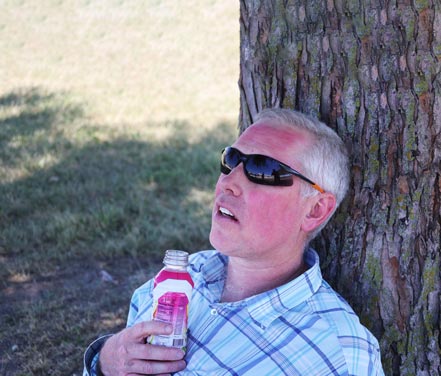New

To prevent heat-related illnesses, follow the guidelines below when working in temperatures above 75 degrees:
- Check the weather prediction for temperature, humidity, and heat index.
- As these factors increase, plan to decrease work level, increase breaks, and increase fluid intake.
- Drink a minimum 8 ounces (1 cup) of liquid about every 15 to 30 minutes. (Note: Do not wait until you are thirsty to drink!)
- Liquids should include electrolyte to avoid flushing your body of critical salts.
- Avoid caffeine, alcohol, drugs, and large amounts of sugar because they can speed up the dehydration process.
- Wear lightweight, loose clothing and light colors that reflect sunlight.
- Save strenuous work for the cool times of the day such as early morning or evening.
- Be especially careful with those tasks that require personal protective equipment. Take more frequent breaks and drink more liquids.
- Pace yourself and take 15-minute breaks in the shade or air-conditioned cab at a minimum every two hours (Figure 1). This is a minimum. Hot conditions with PPE may require breaks every 10 to 15 minutes
- Gradually adjust to working in the heat.
- Check your prescription and over-the-counter medication to determine if there are side effects when exposed to heat.
- Talk to your physician if you have a chronic health condition to obtain any special recommendations for working in hot and humid environments.
- Designate a “spotter,” someone you inform of your work conditions and location, to check in with you at regular intervals.
- Change work schedules and routines as possible if the heat index may exceed 100°F or temperatures reach the mid-90s.
- Review resources outlining symptoms and first aid for the forms of heat illness.
Resources
- Heat Illness and Agriculture, Penn State
- Heat Stress, US Department of Labor
- Heat Stress -- Heat Related Illness, Centers for Disease Control and Prevention